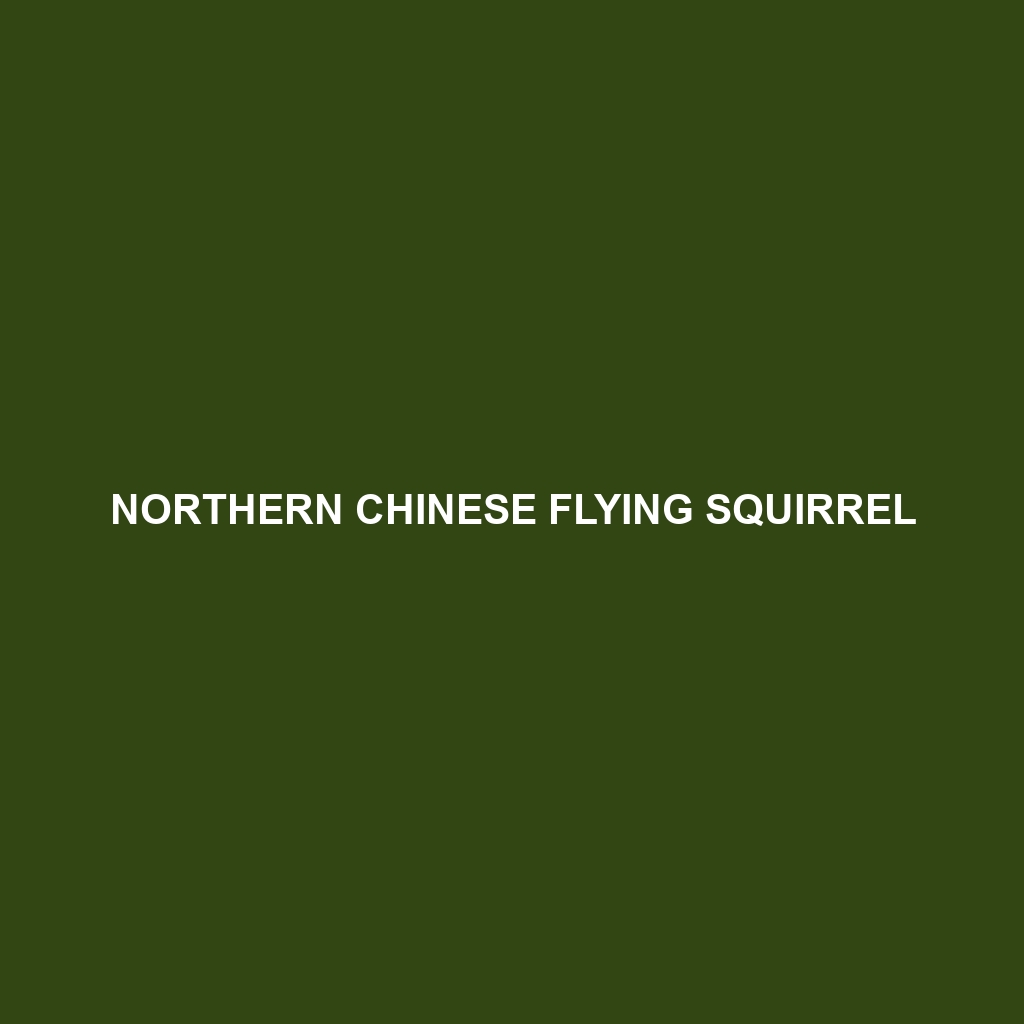Northern Chinese Flying Squirrel
Common Name: Northern Chinese Flying Squirrel
Scientific Name: Eupetaurus cinereus
Habitat
The Northern Chinese Flying Squirrel is primarily found in the mountainous forests of China, particularly within the provinces of Sichuan and Yunnan. This species prefers temperate and subtropical forests that provide ample trees for gliding and nesting. These flying squirrels are often located in areas with dense canopy cover, which offers protection from predators and ideal conditions for their arboreal lifestyle.
Physical Characteristics
Typically, the Northern Chinese Flying Squirrel reaches a body length of 25 to 30 inches, with a tail that can be an additional 16 to 18 inches long. Their fur is predominantly grey to brown, with lighter underbellies. One of their most distinctive features is the large membrane that stretches from their forelimbs to hind limbs, enabling them to glide gracefully between trees. Their large eyes are adapted for nocturnal activity, making them skilled nighttime foragers.
Behavior
Northern Chinese Flying Squirrels are primarily nocturnal and exhibit gliding behaviors as their primary mode of locomotion. They rely on their large membranes to glide from tree to tree, allowing them to cover significant distances in search of food or escape from predators. Socially, these flying squirrels are generally solitary or can be found in small family groups. They are known for their vocalizations, which can include chirps and whistles during communication with other squirrels.
Diet
The diet of the Northern Chinese Flying Squirrel primarily consists of fruits, nuts, seeds, and tree bark. They are particularly fond of berries and can often be seen foraging during the night. Their feeding habits are crucial for seed dispersal in their forest habitat, aiding in plant regeneration and ecosystem health.
Reproduction
Reproductive season for the Northern Chinese Flying Squirrel typically occurs in late winter to early spring. After a gestation period of about two months, female squirrels give birth to 1 to 3 offspring. The young are born altricial, meaning they are undeveloped at birth and rely heavily on their mother’s care in the initial weeks. Parental care is typically shared among family members, enhancing the survival of the young.
Conservation Status
The Northern Chinese Flying Squirrel is currently classified as Vulnerable by the IUCN Red List. The primary threats to their population include habitat loss due to deforestation and fragmentation, as well as hunting in some areas. Conservation efforts are crucial for maintaining their habitats and ensuring the survival of this unique species.
Interesting Facts
One fascinating aspect of the Northern Chinese Flying Squirrel is its impressive ability to glide up to 150 meters (about 490 feet) by using its membrane. Additionally, they are often referred to as “flying lemurs,” though they are not closely related to lemurs at all. This species’ ability to communicate through various vocalizations showcases their complex social interactions.
Role in Ecosystem
The Northern Chinese Flying Squirrel plays an important role in its ecosystem as both seed dispersers and prey for larger predators. By feeding on fruits and nuts, they help in the propagation of various tree species. Their presence also contributes to the biodiversity of their habitat, making them a key species within their forest environment.
